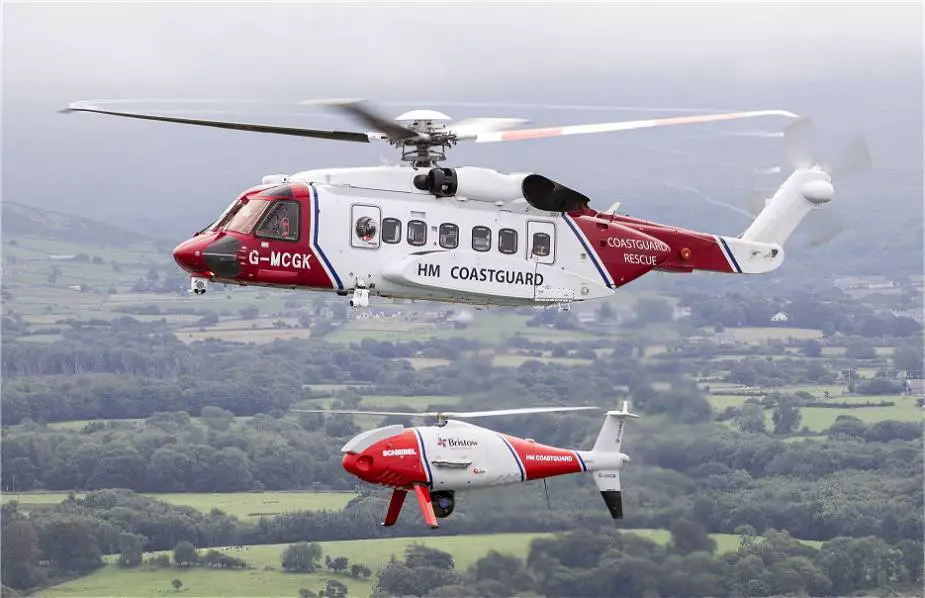In July 2020, British HM Coastguard has conducted first search and rescue missions with unmanned aerial systems CAMCOPTER S-100. HM Coastguard’s helicopters provide support for inland search and rescue which includes the mountain regions, as well in the maritime environment and the unmanned aircraft will work alongside those..
In July 2020, British HM Coastguard has conducted first search and rescue missions with unmanned aerial systems CAMCOPTER S-100. HM Coastguard’s helicopters provide support for inland search and rescue which includes the mountain regions, as well in the maritime environment and the unmanned aircraft will work alongside those.
Follow Navy Recognition on Google News at this link
 British HM Coastguard helicopter and unmanned aerial vehicle Camcopter S-100 conduct search and rescue missions. (Picture source HM Coastguard)
British HM Coastguard helicopter and unmanned aerial vehicle Camcopter S-100 conduct search and rescue missions. (Picture source HM Coastguard)
The HM Coastguard is now equipped with two Schiebel CAMCOPTER® S-100 systems, that were acquired following a rigorous, three-month test program which began in March this year.
That program was designed to complement work being carried out by the Maritime and Coastguard Agency to develop regulations under which UAVs can operate as SAR aircraft. Unmanned aircraft are expected to play a key role when UKSAR2G, the second-generation of search and rescue service due to begin operations in 2024.
Her Majesty's (HM) Coastguard is a section of the Maritime and Coastguard Agency responsible, through the Secretary of State for Transport to Parliament, for the initiation and coordination of all maritime search and rescue (SAR) within the UK Maritime Search and Rescue Region. This includes the mobilization, organization and tasking of adequate resources to respond to persons either in distress at sea, or to persons at risk of injury or death on the cliffs or shoreline of the United Kingdom.
The CAMCOPTER S-100 is an Unmanned Air System (UAS) developed and manufactured by the company Schiebel. The Vertical Takeoff and Landing (VTOL) UAS needs no prepared area or supporting launch or recovery equipment. It operates day and night, under adverse weather conditions, with a range out to 200 km, both on land and at sea.
The S-100 navigates automatically via pre-programmed GPS waypoints or can be operated directly with a pilot control unit. Missions are planned and controlled via a simple point-and-click graphical user interface. High-definition payload imagery is transmitted to the control station in real-time. Using "fly-by-wire" technology controlled by redundant flight computers, the UAV can complete its mission automatically in the most complex of electromagnetic environments. Its carbon fiber and titanium fuselage provide capacity for a wide range of payload / endurance combinations.







